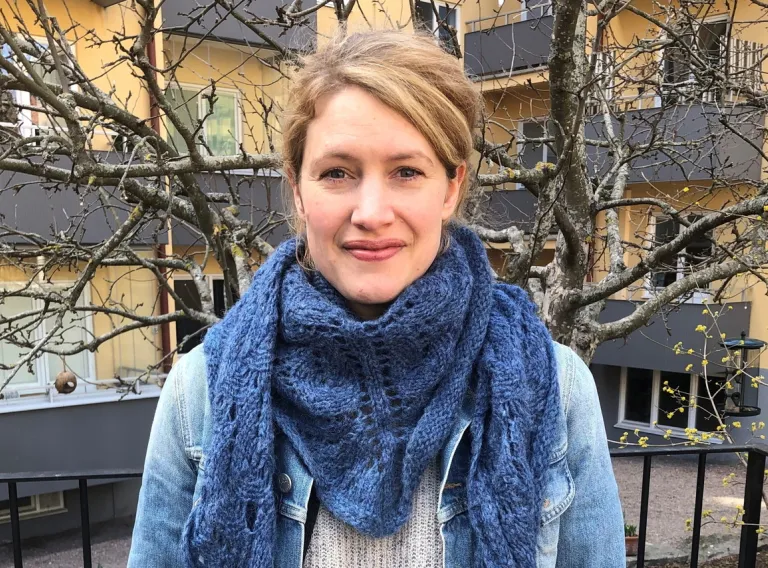
"Iceland has become a role model of sorts in this field as the country has been placed at the top of international lists on gender equality for the last decade. However, scholars have criticized the glossy image presented of the current state of gender equality. This is the context of my research; I study the legacy of the Icelandic women's strike in 1975 from a critical point of view, against the background of the dominant triumphal discourse on gender equality in Iceland," says Valgerður Pálmadóttir, post-doc in history at the University of Iceland, who is studying the ideational content and legacy of the 1975 Women's Day Off and the impact it had, and still has, in Iceland and internationally.
The Women's Day Off that took place in Iceland on October 24th 1975 is remarkable on many levels. On this day, women all over Iceland stopped working to protest the wage gap and their status compared to men. Valgerður says that the Icelandic Redstocking movement was the leading force behind the idea of a one-day women’s strike. The Redstockings had then recently adopted a policy based on the idea that there are indissoluble links between class struggle and women’s liberation and agitated for the women’s strike-idea at a conference they held together with the largest women’s labour unions in January 1975. "Finally, these groups managed to recruit representatives from all the main women's organizations in Iceland to join in and advocate for women to stop working for one day in order to demonstrate their indispensable work contribution. Finally, an executive committee was formed, including women from a wide range of women’s organisations throughout the political spectrum. However, it was decided to call the demonstration a "day off" rather than a strike, in order to engage as many women as possible and to ensure participation across political lines. One could argue that by doing so the act had been weakened, but at the same time the main achievement or the victory of the women's strike lies in the extensive participation," she says.
During the Day Off, 25,000 people, out of a population of 220,000 in Iceland, gathered in the centre of Reykjavik, making it one of the largest demonstrations in Icelandic history, and rallies were also held around Iceland. The enterprise received worldwide attention and Valgerður points out that the Icelandic Women's Day Off is sometimes referred to as a turning point concerning gender equality in Iceland and the country's "success" in the field. "Vigdís Finnbogadóttir's election is an example of this, but she has talked extensively, both in Iceland and abroad, that the Women's Day off was pivotal for her being elected president in 1980; and her contribution has surely added to the attention the Day Off has received," adds Valgerður.
Women's Day Off inspired international Women's strike movements
The success of the Women's Day Off spread all over and has, according to Valgerður, been a source of inspiration for women's movements all over the world from 1975 onwards, including a new international movement on women's strikes; one of the reasons Valgerður is conducting this research. "The strikes began in 2017 as the International Women‘s Strike and have been held annually on 8 March, the International Women's Day. This movement was launched after women in Poland, and later in Argentina, stopped working for one day in the autumn of 2016 to protest impending law changes limiting the right to abortion and against gender-based violence in a broad sense. In both Poland and elsewhere the Day Off action in Iceland was mentioned as an important model and inspiration for their own protests," says Valgerður.
She also points out that prominent voices in the new wave of women's strikes reject the parameters of liberal feminism, which they say has been predominant in the last decades. "They claim that liberal feminism has been based on individualism and focused too much on breaking glass ceilings within the current system. Spokespersons for the new movements want to revoke feminism for the 99% and rekindle the discourse on economic inequality, systematic disrespect for traditional women's work, and class division characterised by racism. It can be claimed to some extent that the radical ideas of the women's movements of the seventies have come back in a renewed shape," explains Valgerður.
The legacy of the Women's Day Off thus continues to inspire morale worldwide and give the idea of a united force for social change a historical manifestation. "This part of my research is in line with my interest in the role of the historical narratives, symbols and emotions as a driving force for political movements," says Valgerður who has a broad background in history of ideas, philosophy, and gender studies. "The human being as a political being is probably the connecting theme of most of my scientific endeavours. I am very interested in social movements, their agenda, discourse, and the historical and philosophical context of their ideas. Another related interest of mine is feminist philosophy. I have been leading study groups on feminist philosophy organised by the Nordic Summer University. There is considerable growth in both gender studies and feminist philosophy and these subjects – together with history of course - are very relevant today," adds Valgerður.



